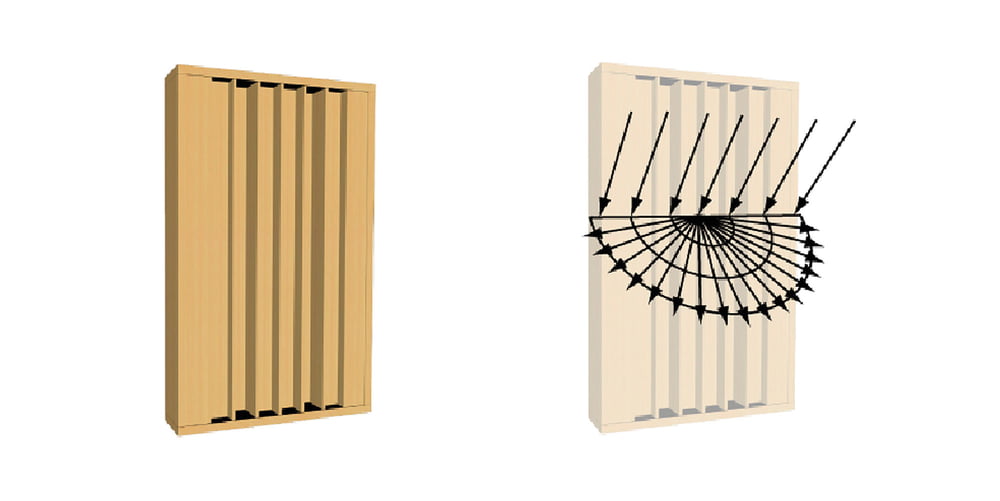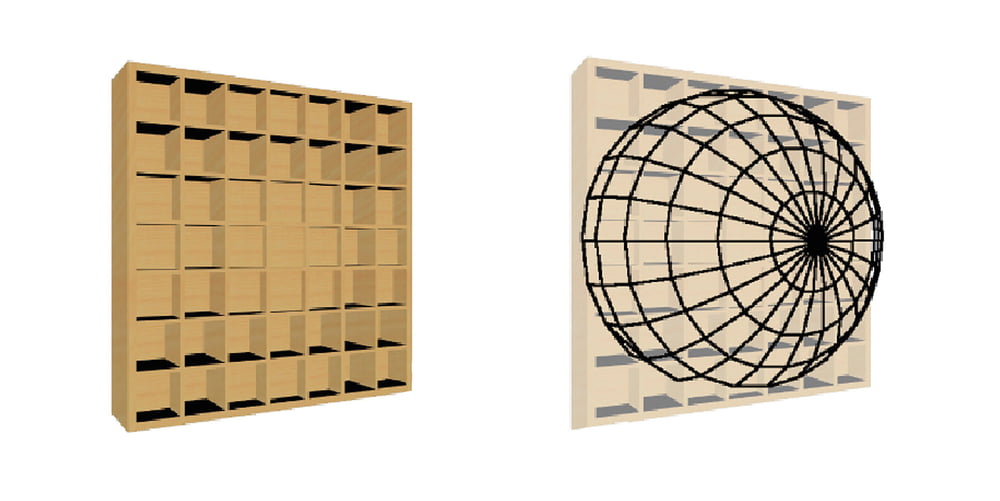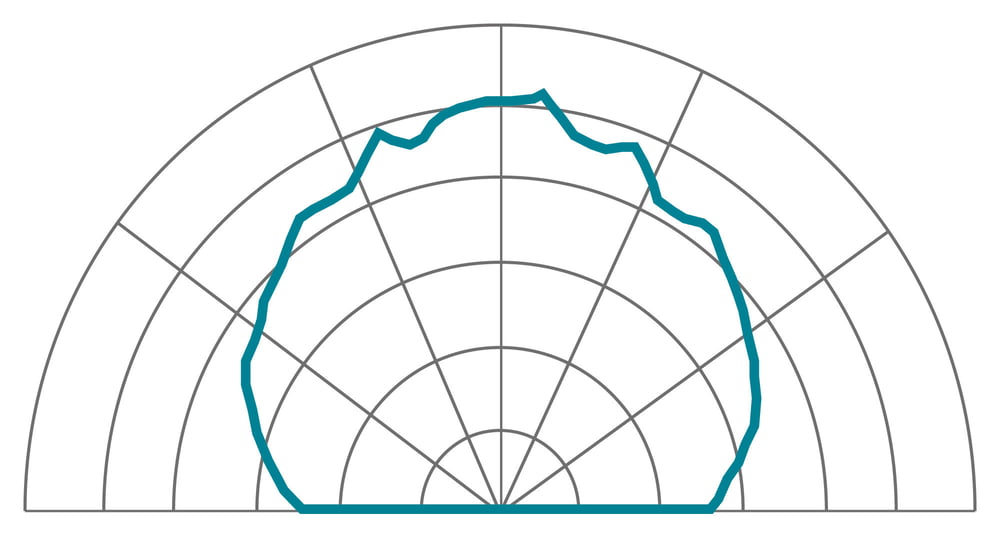6. Technical Resources for Improving Room Acoustics 02: Diffusors
Generally, every unevenness in a room surface diffuses sound at certain frequencies. The more pronounced the unevenness, the deeper the frequencies that are affected. Uneven stone walls, for example, diffuse medium and high frequency sounds into various directions in the room. But the ways in which such surfaces diffuse sound are difficult to anticipate.
German physician Manfred Schröder developed mathematically calculable diffusors first marketed commercially by the American company RPG, inc. The most popular diffusers of this type are based on mathematical calculations of residual sound and are thus known as Quadratic Residue Diffusors. They are constructed as plates with grooves and thin dividing strips. The spacing of these is mathematically defined. QRDs can be effective in one or two directions in space and are correspondingly known as one-dimensional or two-dimensional diffusors. One-dimensional diffusors diffuse sound only in the plane vertical to the grooves. Along the grooves, such diffusors behave as an even wall would. Two-dimensional diffusors, in contrast, diffuse the sound both horizontally and vertically.

One-dimensional QRD with diffusion characteristics

Two-dimensional QRD with diffusion characteristics

The polar diagram shows the even diffusion of sound energy in various directions of space
QR diffusors offer a number of advantages:
- completely calculable mathematically and therefore reproducible
- very uniform and predictable diffusion of sound
- sound is not only diffused evenly in different directions, but temporally as well.
- sound energy is preserved through spatial and temporal diffusion, but the reflection towards a specific direction in space is correspondingly muted
- the effective frequency range can be predicted and customized by the manufacturer
Looking at a diffusor, you can estimate its effective frequency range using the grooves (approximately corresponds to the total thickness of the diffusor) and the width of the grooves. The following is a good rule of thumb:
- Lower limit frequency: frequency with a wavelength twice the maximum groove depth
- Upper limit frequency: frequency with a wavelength twice the groove width.
However, the diffusor's effect does not suddenly stop at these points. You can safely assume some diffusion will occur up to an octave above and below these respective values, but it will not be as even. With QR diffusors, a minimum distance to the mic or listening position is necessary. This distance should be at least six times the thickness of the diffusor to avoid the diffusor itself imparting coloration to the sound.





